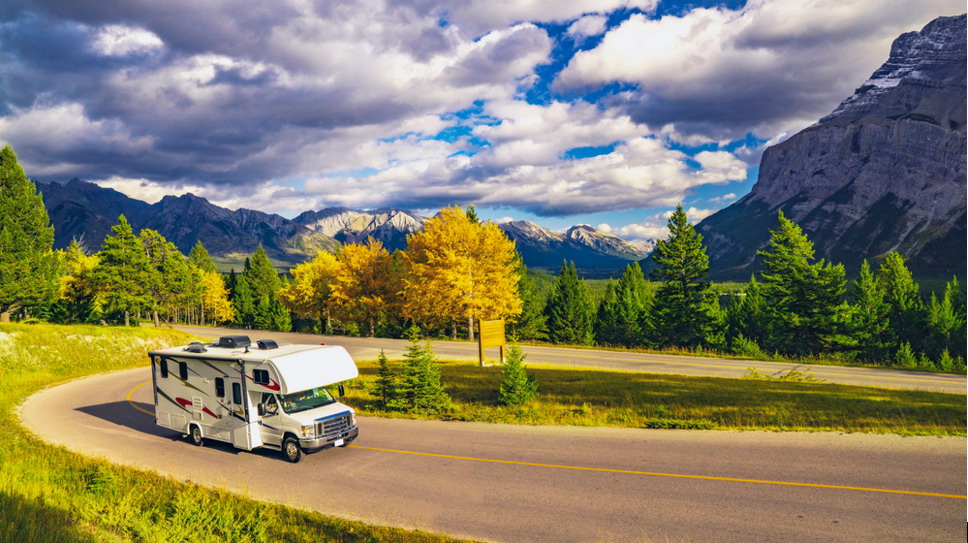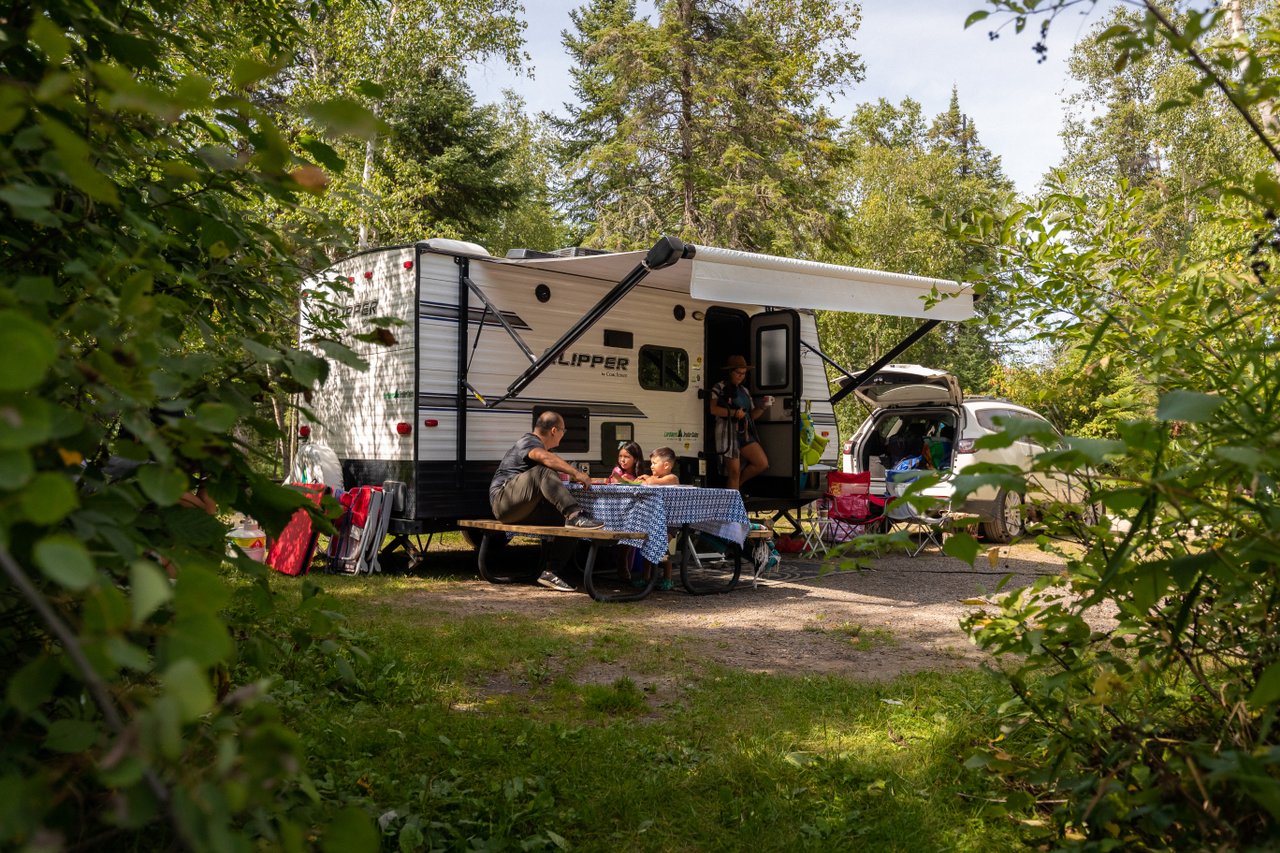How to Get Your RV Transported To A Campground In The USA – and Then Back Home…
A Guest Editorial feature by Jason Mueller, A1 Auto Transport.
Driving your own RV is a great way to save money, but it also means you’ll have to spend extra time on logistics.
The best route for getting your camper from Canada into America is dependent on where you are planning on going, how long you plan on staying, and what time of year it is. There are dozens of companies that offer international trucking services between Canada and America.
Getting your RV from Canada to the United States and back again can be quite an adventure, but it doesn’t have to be difficult if you know what you’re doing.
Transporting RVs between the two countries requires that you follow some special steps to ensure that your vehicle comes through without any issues.
This guide will outline all of those steps, so you can safely transport your RV across the border while avoiding any problems.
Taxes And Fees
The taxes and fees associated with a cross-border move will vary depending on your specific circumstances.
The two highest costs are customs duties and brokerage charges. You may have to pay duty if you’re bringing goods into Canada worth more than $200, which is 6.1% of their value (or $25, whichever is higher)
If you’re bringing vehicles across the border, you may have to pay excise tax on their value plus duties if they cost more than 15,000 Canadian dollars.
There may also be less obvious fees involved, like inspection services at your port of entry or other inspections conducted by government agencies. All these fees will add up, so make sure you factor them in when calculating your total cost.
Paperwork
Before you ship your RV, you’ll need a few things: A title, registration documents, bill of sale/trade-in information, insurance information, and permission to export. You’ll also need all items required by your destination state.
Contact your broker or dealer early on to determine exactly what these requirements are. There may be an inspection process or a requirement that requires you to bring the vehicle into compliance before it can leave.
It is important to check with your state and others where you might have intentions of visiting with your vehicle, as many states have different regulations on registering vehicles within their borders.
If you’re planning on driving your RV across the border, make sure that your insurance is up-to-date. It may seem like a no-brainer, but many RV owners forget that they’ll need insurance while they’re in another country.
If you don’t have Canadian auto insurance—and depending on where you drive—you could be held responsible for damages and injuries incurred by others.
Also, make sure to check if there are additional requirements on cross-border travel in your province; some areas may require you to register your vehicle when travelling outside of Canada, so ask about that as well.
How To Prep Your RV Before Shipping
No matter how often you take it out, your RV will need a little bit of prep before you ship it. If you have never shipped a vehicle before, you might not know what to expect.
The best way to ensure that your rig gets there on time is to do your homework in advance. Here’s a quick rundown of things that need to be done before shipping your RV.
- Inventory your belongings. – The most important step towards preparing your RV is making sure you know exactly what’s inside. Make a list of everything, get quotes, and check insurance coverage and storage options. Take photos with your phone or digital camera so nothing will get forgotten while packing, and remember anything over $250 requires proof of insurance.
- Clean and deodorize. – It’s likely been a while since you were last inside your camper if it hasn’t been used much lately. Keeping up with regular maintenance can make all the difference in getting rid of musty odours – scrub down floors, walls, and any other surfaces that could use some love. Also, make sure every appliance works properly to avoid headaches once you reach your destination.
- Seal cabinets and drawers. – Seal boxes/cabinets/drawers/doors (with tape, silicon, or shrink-wrap) to prevent shifting in transit. Your safest bet is using cardboard boxes to pack items instead of putting items directly into plastic bins.
- Store food items safely (if applicable). – If you’re hauling your propane tanks or gas cans, don’t forget to fill them up at least half full before storing them away during transit. Otherwise, store food items such as canned goods and snacks somewhere safe (as recommended by the shipper). Make sure any perishable foods are packed properly with ample ice packs within sealed coolers—not just thrown around loose in the trunk area.
How to Ship an RV From America to Canada – and Back Again
If you’re planning on moving from the United States to Canada with your RV, the transport process can seem like a daunting endeavour, especially if you aren’t sure how to go about it properly. Companies like https://www.a1autotransport.com/rvs/ save you the hustle that comes with shipping.
Here is advice on how American RV owners can get their vehicles transported to campgrounds in Canada and then back home.
 Preparing your RV
Preparing your RV
Before you start your cross-border RV shipping, it’s important to ensure that your vehicle is safe for travel.
In most cases, you’ll want to start by ensuring that all systems are working properly. Then, fill up your gas tank and perform a thorough check of fluids (including oil, coolant, brake fluid, transmission fluid, and windshield washer fluid).
Of course, we highly recommend booking an appointment with a professional mechanic before you hit the road. They will perform safety checks and ensure that everything on your vehicle is in proper working order.
Costs Involved
Shipping an RV is an expensive prospect, particularly when adding international taxes and Canadian shipping costs. There are ways to mitigate these costs, though. As such, you should work with a dedicated team of experts who can provide you with all of your options—from finding affordable insurance coverage that suits your needs to locating shipping services that match your budget.
These businesses exist in both countries, so don’t hesitate to shop around for someone who will meet your needs on all fronts. RVs vary wildly in size, shape, materials used, etc.
The fees associated with shipping an RV aren’t set in stone; you can negotiate with individual carriers based on location, condition, and other factors that increase or decrease risk (as determined by them). Remember that international shipping routes are often full of challenges, so be sure that you thoroughly understand these hazards before committing to anything.
International RV Shipping
Shipping your motorhome, travel trailer, or 5th wheel across international borders can be extremely stressful. It’s not only time-consuming and confusing but also potentially extremely expensive if you don’t get everything right the first time around. See https://travel.gc.ca/returning/customs/importing-vehicle to get a quick overview on importing.
This guide will walk you through the entire process of shipping an RV overseas so that you won’t run into any surprises once it comes time to transport your vehicle across an international border.
How Long Does It Take?
There are two ways that you can ship your RV across international borders. The first is by paying a company or other party to transport it for you. The second is by transporting it yourself, either with your motor vehicle or on a container vessel.
Depending on which route you choose, it can take as little as three weeks or as long as six months. Whichever route you go down, be sure to leave plenty of time before your travel date so that any snags or delays can be dealt with well in advance.
Once there’s a shipping label and a tracking number attached to your vehicle, there’s very little that can be done about delaying factors, including adverse weather conditions and even mechanical problems. To ensure smooth sailing and prompt delivery of your vehicle at its destination, plan.
Broker Or No Broker?
It’s common for RV owners in Europe, Mexico, and Canada to ship their vehicles across borders. If you plan on shipping your home on wheels overseas, you should consider hiring a broker to handle all of your paperwork and make sure that it gets delivered intact.
You have no idea how many trucks and cars get lost during transport. Use a broker if you don’t know what documents are required or how much it will cost. It will cost a little extra up front but could save thousands of dollars when things go wrong.
Damaged Or Missing Items
When shipping a vehicle, you are responsible for documenting any damage that occurred in transit or any missing items. These items should be noted on packing lists and all customs forms.
In addition, you’ll need to have your carrier file a claim with its liability company; otherwise, you’ll need to work directly with your insurance agent or company representative.
Most carriers will only process claims from within their own countries—though some may allow claims against foreign companies in certain cases. The bottom line is that you want to make sure all of your documentation is up-to-date and accurate before crossing into another country, so there’s no confusion at delivery time.
More than likely, customs officials will expect original documentation with notations by customs agents at delivery time and won’t accept copies.
If you plan ahead, you can hop a flight to the sunbelt, and your RV will be waiting for you when you arrive at your campsite… it’s an interesting alternative for those who find the long-distance drive a bit too strenuous, and an ideal solution for busy RV’ers who want to maximize their time at their destination by having professional drivers transport their rig.
For more information, please visit www.a1autotransport.com






















